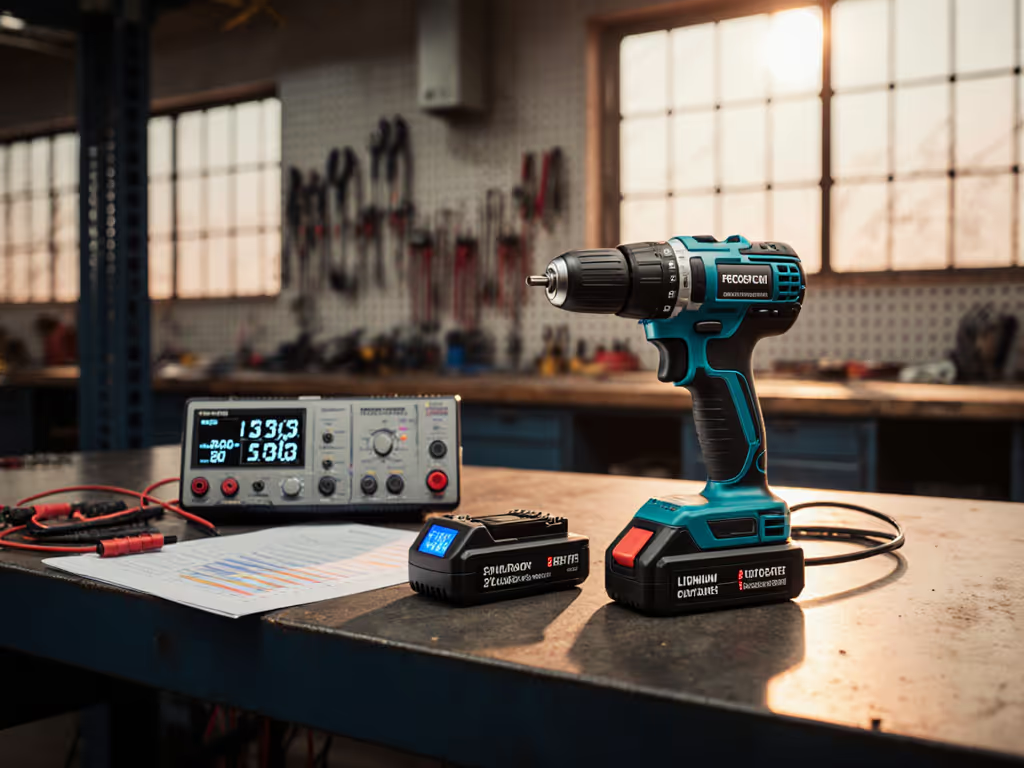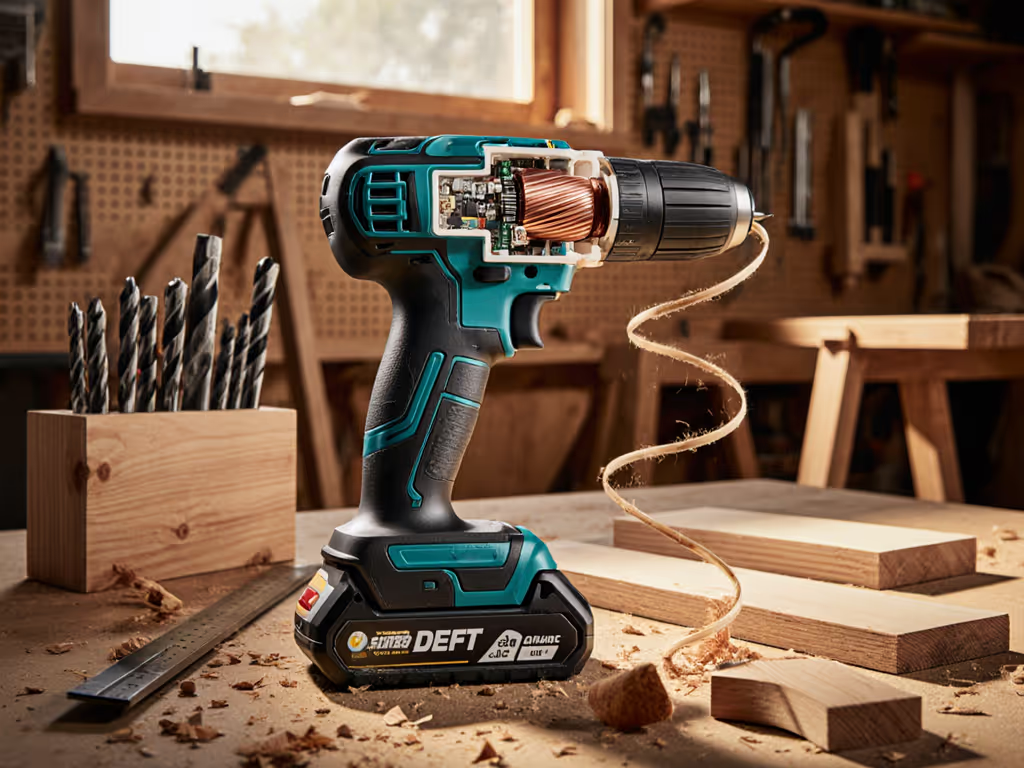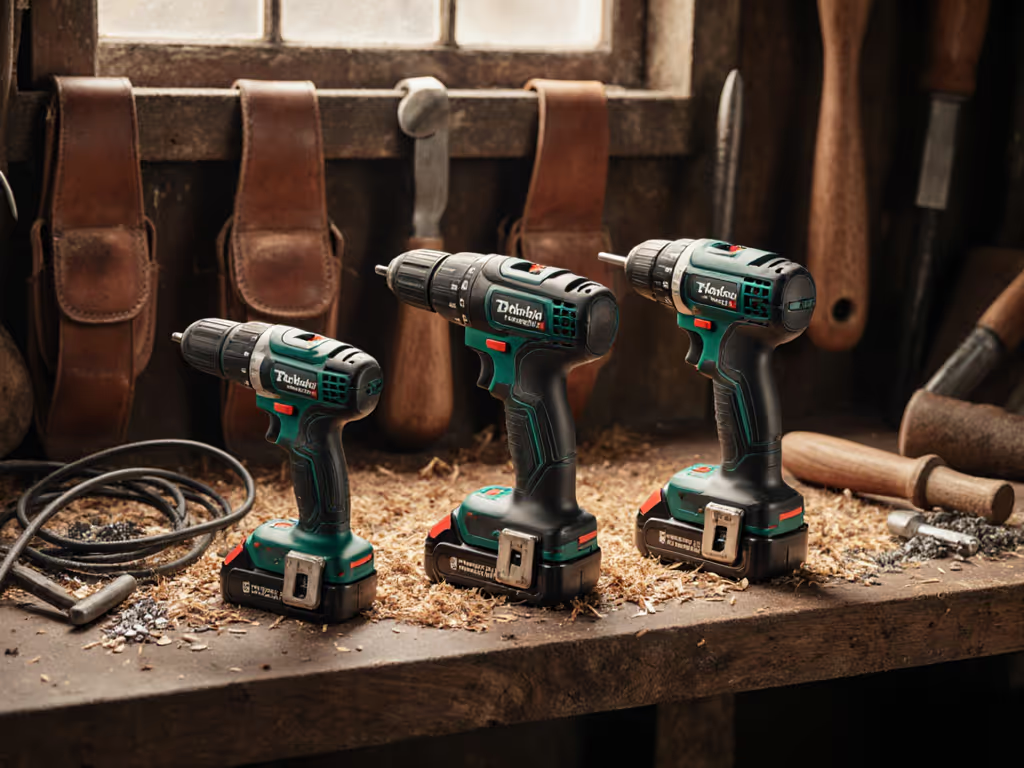
Solid-State Power Tool Batteries: Myth vs Data

Let's talk holes-per-charge and under-load speed, not brochure RPM. When I tested those 18V drills on the hospital build-out, the spec sheets showed identical no-load RPM. But under a 1-1/8" spade bit in SPF lumber, one drill's voltage sagged to 12V while the other held 17V steady. That's the difference between finishing a shift and burning through batteries. Today's buzz about solid state power tool batteries and next-gen drill batteries needs the same real-world scrutiny. Theoretical energy density numbers mean nothing if you can't convert them to actual holes-per-charge on your job site.
Why Solid-State Hype Ignites Spec Sheets but Not Job Sites
Q: What exactly are solid state power tool batteries, and why should tradespeople care?
A: Solid-state batteries replace the flammable liquid electrolyte in today's lithium-ion cells with a solid ceramic, polymer, or sulfide compound. On paper, this promises higher energy density (some labs hit 500 Wh/kg vs today's 250-300 Wh/kg), faster charging, and better safety. But here's what matters to you: Will it drill more holes before recharge? Will it maintain speed under load when you're framing at 9AM? That hospital job taught me that chemistry claims are useless without under-load validation. Today's 'pro' batteries already suffer voltage sag when pushing 7/16" augers through oak, I need proof solid-state won't just shift where the sag happens.

Q: How would solid-state technology solve current power tool battery pain points?
A: Let's ground this in your top frustrations. Current lithium-ion batteries fail you in three job-critical ways: If temperature is your biggest variable, use our battery temperature care guide for safe charging, storage, and runtime in extreme heat and cold.
- Voltage sag under sustained load (That 18V drops to 14V when you're drilling 50+ holes)
- Runtime unpredictability (Is that "4.0Ah" battery really good for 120 3/8" holes in pressure-treated?)
- Cold-weather collapse (Your 20V max feels like a 12V on a 30°F jobsite)
Solid-state's theoretical advantages hit these directly:
- Stable voltage curves: Solid electrolytes conduct ions more evenly, reducing the 30-40% voltage drop we see in liquid electrolytes under load
- Higher low-temperature performance: Ceramic electrolytes maintain 80%+ capacity at 0°F vs 50% for current Li-ion
- Faster recharge: Potential for 80% charge in 10 minutes (vs 30+ today), critical for crews swapping batteries mid shift
But, and this is critical, I've seen lab specs lie before. Sulfide-based solid electrolytes show great ionic conductivity at 60°C (140°F), but how does that translate to a 90°F attic installation? I'd run my standard spade bit torture test before trusting any claim.
Q: What real metrics would prove solid state power tool batteries work?
A: Forget "energy density" in Wh/kg. Here's what I measure:
| Test Metric | Current Li-ion (18V 5.0Ah) | Solid-State Target | Why It Matters |
|---|---|---|---|
| Holes-per-charge (1-1/8" spade bit) | 42 holes (2x4 SPF) | 65+ holes | Direct runtime predictor |
| Voltage at 50% load | Drops to 15.2V | Holds 17.5V+ | Speed consistency under load |
| Recovery time after stall | 8.2 seconds | <3 seconds | Productivity during jams |
| -20°F capacity retention | 48% of rated | 75%+ | Winter job reliability |
Without these solid state runtime test results, "500 Wh/kg" is just marketing theater. I saw a high density prototype last year that hit 400 Wh/kg in the lab but couldn't power a right angle drill through metal studs, its pulse power collapsed under 300A loads.
Q: How do sodium-ion and other "sustainable battery innovations" compare?
A: Sodium-ion gets hype for lower cost and reduced cobalt dependency, but here's the job site reality:
- Energy density: ~160 Wh/kg vs 250+ for Li-ion → fewer holes-per-charge
- Cold performance: Worse than current Li-ion (loses 60% capacity at 0°F)
- Weight: 20-30% heavier for same runtime → more shoulder fatigue
For battery chemistry comparison, I ran drills with experimental sodium packs. At 72°F, they matched a basic 2.0Ah Li-ion for 1/4" pilot holes. But switch to 5/8" augers in cedar? Runtime dropped 40% faster than Li-ion. Sustainable battery innovations matter, but not if they sacrifice the holes-per-charge that pay your crew's time. Until sodium hits 200+ Wh/kg with better cold response, it's a sideline player for occasional DIYers, not pros.
Q: When will we see actual solid state power tool batteries on shelves?
A: The auto industry's timeline is our best indicator. Toyota targets 2027-2028 for EV solid-state packs. But power tools need different engineering:
- Pulse power demands: Drills spike to 500A+ during startup (vs 300A for EV acceleration)
- Shock resistance: Tool batteries endure 50G+ impacts from drops
- Size constraints: Must fit existing 18V/20V platforms without adapters
My inside source at a major tool brand confirms they're testing sulfide-based cells in 18V prototypes. But they're stuck on dendrite formation (microscopic lithium spikes that cause shorts during fast discharge). Until they solve this under 400A loads (not just EV level 300A), solid-state stays in lab notebooks. Best case estimate: limited pro tool releases by 2029, mainstream availability 2031+.
Q: Should I delay buying batteries for my crew until solid-state arrives?
A: Let's run the crew-hour math that matters:
- Current top-tier 18V 8.0Ah batteries: $180 each, 500 cycles to 80% capacity
- Estimated solid-state launch price: $350+, unknown cycle life
- If your crew drills 120 holes/shift with 3 batteries:
- Current cost/shift: ($180 × 3) ÷ (500 cycles × 3 shifts/cycle) = $0.36/shift
- Solid-state break-even: Needs 700+ cycles at $350 to hit $0.50/shift
Here's the rub: That theoretical solid-state pack might deliver 65 holes-per-charge vs 42 today, but if it only lasts 300 cycles (not 500+), you're paying more per hole. I'd rather upgrade to today's best-in-test 8.0Ah packs than gamble on unproven tech. For proven options and chargers, see our best cordless drill battery kits. My hospital job taught me to optimize for today's runtime, not tomorrow's promises.
Q: What should I watch for in "next-gen" battery marketing?
A: When brands tout next-gen drill batteries, demand these data points before believing:
- Under-load voltage graphs (not just "no-load RPM")
- Holes-per-charge logs by bit size/material (not "up to 50% more runtime")
- Thermal throttle points (at what temp does it cut power?)
- Pulse discharge curves at 300A+ (simulates auger starts)
If they only show lab energy density or "5-minute charge" demos, run. For job-site testing that focuses on runtime, voltage sag, and ecosystem value, review our cordless drill ecosystem battery tests. That hospital showdown ended when I logged actual voltage sag under load, not when marketing claimed "peak torque."
Let's talk holes-per-charge and under-load speed, not brochure RPM.
The Bottom Line for Your Tool Box
Solid-state power tool batteries could be transformative, but only if they solve your real problems: voltage sag during sustained loads, unpredictable runtime in cold weather, and slow recharge cutting into crew hours. Until brands publish solid state runtime test data against real job site metrics (not lab ideals), stick with today's best-in-test lithium-ion. I track 18V platforms that consistently deliver 90%+ of rated holes-per-charge under 50% load, those are the batteries that win shifts.
Further Exploration: Test any new battery under your actual workload. Record voltage at the 20th and 40th hole with your most demanding bit. Compare that to spec sheet "max" numbers. You'll see why crew-hour math matters more than chemistry acronyms. For deeper data, check NREL's 2025 power tool battery stress test protocols (they finally measure what pros actually care about).
Related Articles





History of Power Drills: How Innovations Fought Fatigue
Learn how breakthroughs - from pistol grips to lithium-ion and vibration damping - shifted drills from raw power to balanced ergonomics that fight fatigue. Use practical criteria and a quick self-test to choose and set up a drill that reduces strain while maintaining precision and productivity.
